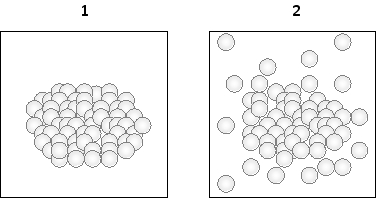Short Answer
You have isolated epithelial cells from mouse mammary glands and have grown them in a three-dimensional gelatinous matrix in the presence or absence of a specific inhibitor that targets a transmembrane metalloprotease. The protease is capable of cleaving cadherin near the base of its extracellular domain to release an N-terminal fragment containing the extracellular cadherin domains. The distribution of the cells in the matrix, as seen under a light microscope, one day after the transplantation of the isolated tissue is presented in the following schematic drawings. Which condition (1 or 2) do you think corresponds to the presence of the protease inhibitor? Write down 1 or 2 as your answer.

Correct Answer:

Verified
The inhibitor prevents the sh...View Answer
Unlock this answer now
Get Access to more Verified Answers free of charge
Correct Answer:
Verified
View Answer
Unlock this answer now
Get Access to more Verified Answers free of charge
Q34: Malignant cancer cells that have entered the
Q35: Indicate true (T) and false (F) statements
Q36: Plasmodesmata in plant cells are functionally similar
Q37: Type IV collagen molecules can interact at
Q38: How does talin activate the inside-out signaling
Q40: A researcher has grown monolayers of cells
Q41: Cellulose is deposited onto the plant cell
Q42: Which of the following is NOT an
Q43: What is the most common additional polymer
Q44: Selectins …<br>A) mainly mediate cell-matrix attachments.<br>B) are